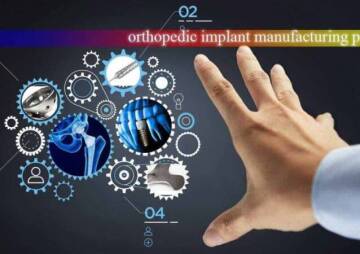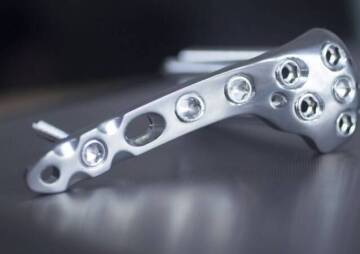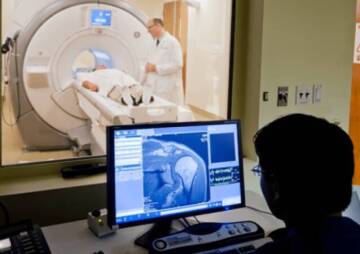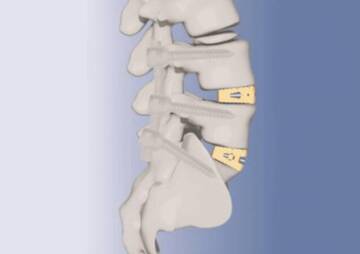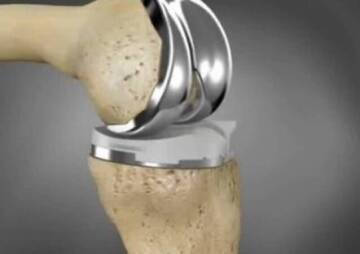-
Category
Craniomaxillofacial Surgery
Orthopedic Surgery
Spine Surgery
Orthopedic Implants
Hip Surgery
Knee Surgery
Pectus Excavatum
Bone Graft
Disinfectants
Healthcare
All you need to know about orthopedic screws
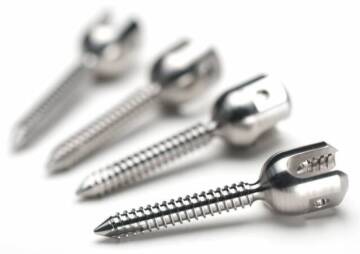
Orthopedic surgeries are impossible without the use of orthopedic screws. Orthopedic screws are one of the tenets in the process of orthopedic fixation. The bone heals better and faster if the fractures are pressed together firmly by orthopedic screws.
Orthopedic surgeries are impossible without the use of orthopedic screws. Orthopedic screws are one of the tenets in the process of orthopedic fixation. The bone heals better and faster if the fractures are pressed together firmly by orthopedic screws. The advantage of these screws is that they decrease the gap between the bones, and, consequently, decrease the stress, which is on the orthopedic implant as well.
Orthopedic screws are also known as to be one of the omnipresent hardware devices used in the surgeries, that may either be used by themselves to provide fixation, or in synchrony with other devices. Any screw which is used in the interfragmentary compression achievement is termed as a lag screw. The advantage of these screws is that they protect the fractured bone from bending, getting rotated, and trivial loading forces.
Orthopedic screws are named after the type of bones in which they are inserted during the surgery.
Cortical bones: These are denser layers of the bones whose main function is protecting the inner and internal cavity. 80% of the skeletal mass is of cortical or as the other name suggests, compact bone.
Cancellous bones: These bones are also termed as spongy bones since they are a bit softer than the cortical bones. Examples of such bones are the ribs and pelvic bones.
Orthopedic screws can be divided into three common types
1) Cortical screws which tend to have threads that are very fine along their shaft, and are designed for anchoring a cortical bone. These types of screws have smaller pitch compared to cancellous screws. Therefore, there are a lot more threads on a cortical orthopedic screw than the cancellous screw.
2) Cancellous screws have coarser threads that are smooth, with unthreaded portion that allows it to act just as a lag screw. A cancellous screw is longer than a cortical screw.
3) Cannulated screws are another type of screws commonly used. They are called cannulated screws because of their hollow shaft. It is to be noted that these orthopedic screws have a lot more advantages over other screws.
The material of orthopedic screws
There are three materials used in making an orthopedic screw, namely:
- Stainless Steel: These screws are very common. In the case of cortical bones, these screws range from 1.5 to 4.5mm, and for the cancellous bones, they range from 3.5 to 6.5mm.
- Titanium: When it comes to implants, titanium is always the best. The titanium screws are ideal for treating the mandibular fractures. As compared to stainless screws, the rate of infection in titanium screws is far lesser than stainless screws.
- Bio-absorbable: These screws are mostly made of polyglycolic acid, poly-L-Icatic acid, and polylactic acids. Since they get absorbed by the body over time, there is no need to remove them from the body. However, they stimulate body reactions in some cases as well.
To place these orthopedic screws in the body, a small krischner wire, better known as a K-wire, is being drilled across the intended area. The cannulated orthopedic screw is then placed over the k-wire, and later slid down to the surface of the bone.
Some other types of orthopedic screws are often seen as well, like the Herbert orthopedic screw, which is designed for fractures that are small articular bones, such as the carpals. It is threaded, like cannulated screws, at both ends. This screw is used mainly where the standard screw would affect an adjacent tissue, such as in the case of the treatment of scaphoideum or osteoarticular fractures.
4) Herbert orthopedic screw is like an Acutrak screw. It is a headless screw best to be implanted right below the surface of the bone. However, an Acutrak screw is not fully like Herbert orthopedic screws. It is fully threaded, which lets it hold the internal power well, and allows the fracture to lie anywhere by the side of the length of the screw.
A final word on orthopedic screws is that in order to use these screws, one must make a screw hole in the bone of the patient or in the hardware that uses them in the process.
All these orthopedic screws are mainly used during surgical implants by the orthopedists.
What is the goal of an orthopedist and what are the other types of orthopedic implants apart from orthopedic screws?
The orthopedists have certain and known goals before they survey surgical fixation on a particular patient. The first and foremost step for them is to provide an anatomic reduction of the particles which are fractured. To do so, they aim at maintaining these parts in a position with some form of fixation to make them stable. While they are performing this task, they try their best to preserve the flow of blood supply to the bones of the patient. In the end, they want to provide an active, pain-free, and comfortable mobilization to the patient and to help in preventing post-surgical complications.
Apart from orthopedic screws, which are mainly used in the process of orthopedic implants, there are two other types of implants: plates and prostheses.
Plates have been in use since 1886. Back then, they were only used to hold fractures together, and for this particular reason, the plates must have an appropriate size in width and thickness. These plates must control and countervail all types of actions and forces like bending, twisting, and compression. In tibia, as well as femur, these plates can be used too. Nowadays orthopedic plates are widely being used for fixation of the long bones and the fractures of diaphyseal.
Prosthesis is well known to be an artificial body part, either in the form of limb, a heart, or even a breast implant. The prosthesis has the advantage of being removable. It has been used for years throughout the history of mankind, and it originated from Egypt. The first recorded case was an eye prosthesis in an Egyptian story.
What are the types of materials commonly used in surgeries and clinical practices?
Two types of materials used in surgeries and clinical practices are titanium and stainless steel. Titanium bone plates are imported from other countries, which makes them expensive. Also, they need a complicated instrument system. These two types of materials are widely used in maxillofacial surgeries as well. Compared to stainless steel, the probability of irritation and infection is significantly less in titanium materials. Thus, these orthopedic screws, orthopedic plates, and prosthesis are mainly made of titanium, making them the best type compared with others. Another important feature in the materials should be the power of long-lasting and resistance for a long time.
This was a directive and brief description of orthopedic screws and surgical implants. Further detailed descriptions are available on Health News Center’s website, which will help you find more about the surgical implants and their uses as well as materials used in them.
